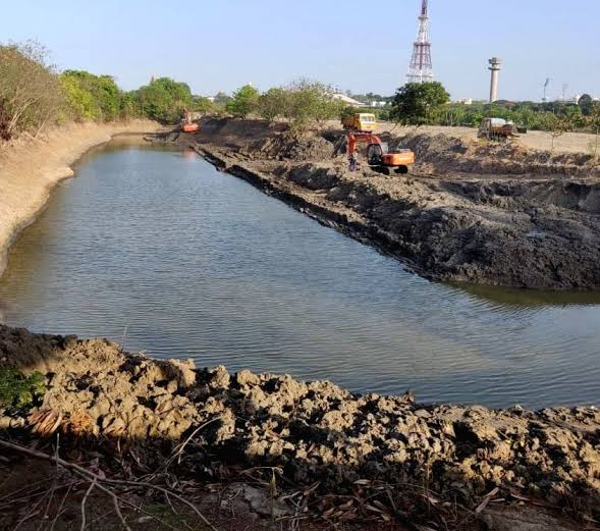New Delhi, Nov 7 (IANS) Once water-starved, Chennai”s Cantonment area and military station now boast of 13 brimful water bodies and recycling plants, and also generate their own electricity. Inspired by the innovation, the Ministry of Defence has directed its Estate Wing to implement the development work across all defence establishments.
The ministry has suggested Directorate General, Defence Estates (DGDE), an inter-services organisation of the ministry which directly controls the cantonment administration, to replicate the Chennai Cantonment area development model.
Water bodies — 13 in all– are revived and a water recycling mechanism was put in place at both Cantonment Board St. Thomas Mount cum Pallavaram and Military Station, where there was an acute shortage of water in 2018.
A senior Indian Defence Estates Service (IDES) officer said that additional storage space for two-crore-litre water was created. “Further, because of recycling plant, 2 lakh liters of treated water is used in these areas per day,” the officer said.
The board also created a waste management system where door-to-door collection of garbage is being carried out and then segregated into bio degradable and non-biodegradable. It is then treated in a bio-compost pit. Thereafter, biodegradable waste is put in centralised processing wind row system and then manure is created and made available for sale.
The board revived a green zone with around 2,000 plantations, set up solar power plants and a sewage treatment plant.
The solar power infrastructure set up in a year had generated electricity worth Rs 1 crore which is distributed within the cantonment areas.
Interestingly, the board has created a separate dumping zone for plastic bags. The board came up with an innovative idea of retrieval of ration milk and meat poly packets from consumers. It formalised collection and disposal, prevented littering and reaped financial benefits.
A senior Indian Army officer said the innovative idea was of Lieutenant General S.T. Upasani, who was the General Officer Commanding (GOC) of Dakshin Bharat Area. Lt Gen Upasani recently took charge as Director General of Information System, the crucial post in Indian Army which was lying vacant for the last two months.
Further, the board carried out campaign to revive green zone and planted 2,022 trees with 98 per cent survivability.
This development model is set to be replicated at 61 cantonments areas across the country that had been notified under the Cantonments Act, 1924, which was succeeded by the Cantonments Act, 2006. There are 62 cantonment areas. The overall municipal administration is managed by the cantonment boards, which are democratic bodies.
The ex officio president of the board is the station commander and the Chief Executive Officer, who is also the Member-Secretary of the Board, is an officer of the IDES or Directorate General, Defence Estates (DGDE).
Source: IANS
Image Courtesy: PROKERALA
You may also like
-
IAF Aircraft Set Course For Exercise Eastern Bridge VII At Oman
-
IAF Set To Host The Indian Defence Aviation Exposition-II At Jodhpur
-
Defence Secretary to co-chair 5th India-Philippines Joint Defence Cooperation Committee meeting in Manila
-
Simultaneous Launch Of ‘malpe And Mulki’, Fourth And Fifth Ships Of Asw Swc (Csl) Project
-
Aatmanirbharta in Defence: MoD signs Contract with HAL for 240 AL-31FP Aero Engines for Su-30MKI Aircraft
